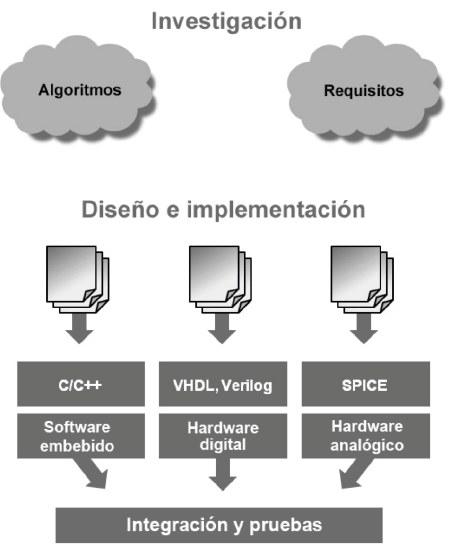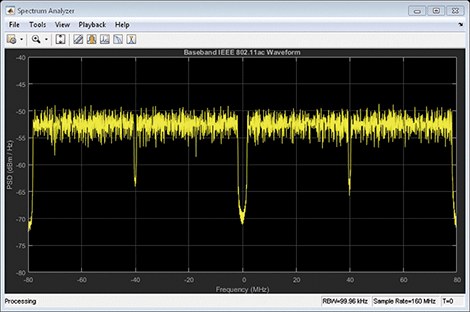Verification of systems that make intensive use of algorithms
it is a long and expensive process. Studies show that most
of embedded system defects are introduced at the specification stage, but are not detected until late in the process
developmental. These defects are the main cause of project delays and account for a significant part of engineering costs.
But this does not have to be like this. Many algorithm-rich system designers already have the tools to control verification. Engineers can use these same tools to create system models to help them locate and correct problems earlier in the development process.
In this way, not only the time spent on verification is reduced, but also the performance of the designs is increased. This article explains three practical approaches to early verification that make this possible.
First, we'll look at why the current algorithmic IP verification process is inefficient and error-prone. Algorithms IP can differentiate systems with functions of communication, audio, video, images
and navigation. Unlike out-of-the-box components, Algorithm IPs are the “secret touch” of an enterprise, are inherently application-specific, and require a different approach to verification.
In a typical workflow, designs start with developers.
of algorithms, which translate the design to the hardware and software teams through specification documents
Each team often develops its own test procedures to determine if the implementation is functionally correct. These test procedures are often created on a case-by-case basis.
and are based on the engineer's interpretation of the specifications. This is a problem, as in many cases hardware and software engineers do not have the tools or application domain knowledge needed to correctly interpret and implement the specifications. And vice versa: Algorithm developers may not have the necessary tools or experience to ensure that they have identified all of the precise “real world” requirements. They often discover late in the development process that algorithms don't work as expected in the runtime environment.
Using different tools and workflows for digital and analog/RF hardware and software components compounds this inefficiency by preventing verification of system behavior in different domains. This can cause unexpected interactions between hardware and software. As a result, system verification does not occur until late in the workflow, in the system integration phase, when design changes are more difficult and more expensive to make.
Since most bugs are introduced at the specification stage, conventional hardware, software, and ESL tools cannot resolve these issues, as they assume that the requirements have been adequately and accurately captured in the specification. The verification problem needs to be addressed early in the process and through connecting algorithm and behavior modeling to subsequent workflows.
Early verification thanks to model-based design
Model-based design offers a better approach. It provides a number of tools for algorithm design, system simulation and prototyping, and rigorous analysis. Using these tools, algorithms
and the tests are designed as part of a behavior system model. This system model serves as the basis of an executable specification that all design teams can use as a design reference and test bench. This approach provides all design teams (including algorithm development, system architecture, and various components) with an unambiguous, shared view of design requirements.
Using model-based design to verify the behavior of systems and components has several advantages:
- Design and integration problems can be discovered early through simulation, while they are still easy to correct.
- It is possible to develop tests at the same time as the design to ensure that the executable specification meets the requirements.
- Reuse of models as test benches for component deployment eliminates manual test creation
and reduces misinterpretation.
- Designers can quickly assess compromise analyses, component interactions, and system-level metrics.
These early verification capabilities address the biggest source of product delays by allowing engineers to discover and correct defects at the specification stage. Independent research has shown that this can cut product development time and cost in half, as well as lead to better product designs.
Automated verification and reuse of test benches
Getting started with model-based design is surprisingly easy. As a first step, algorithm designers and implementation teams can collaborate to automate existing testing procedures with the tools they already use. from the perspective
For algorithm designers, this automation has more to do with a change in mindset than a change in workload, as they already develop test benches to check their own work.
In the traditional design flow, these test benches do not leave the algorithm design pool. With model-based design, this work can be reused rather than lost to the implementation team.
Reuse is achieved through automation interfaces to algorithm and system modeling tools, which enable co-simulation using widely used hardware simulators and development boards. This cosimulation replaces script-based and manual comparison techniques that would otherwise be required to verify that C code, HDL, and analog circuit implementations meet system-level metrics. Reusing test benches significantly reduces verification tasks and allows all teams to use existing tools and workflows more efficiently.
Using model-based design to verify the behavior of systems and components has several advantages:
- Design and integration problems can be discovered early through simulation, while they are still easy to correct.
- It is possible to develop tests at the same time as the design to ensure that the executable specification meets the requirements.
- Reuse of models as test benches for component deployment eliminates manual test creation
and reduces misinterpretation.
- Designers can quickly assess compromise analyses, component interactions, and system-level metrics.
These early verification capabilities address the biggest source of product delays by allowing engineers to discover and correct defects at the specification stage. Independent research has shown that this can cut product development time and cost in half, as well as lead to better product designs.
Automated verification and reuse of test benches
Getting started with model-based design is surprisingly easy. As a first step, algorithm designers and implementation teams can collaborate to automate existing testing procedures with the tools they already use. from the perspective
For algorithm designers, this automation has more to do with a change in mindset than a change in workload, as they already develop test benches to check their own work.
In the traditional design flow, these test benches do not leave the algorithm design pool. With model-based design, this work can be reused rather than lost to the implementation team.
Reuse is achieved through automation interfaces to algorithm and system modeling tools, which enable co-simulation using widely used hardware simulators and development boards. This cosimulation replaces script-based and manual comparison techniques that would otherwise be required to verify that C code, HDL, and analog circuit implementations meet system-level metrics. Reusing test benches significantly reduces verification tasks and allows all teams to use existing tools and workflows more efficiently.
Perhaps even more important is the ability to create better product designs and evolve existing ones, as robust system models make it easy to create derivative designs or quickly adapt them to new requirements.
Companies that adopt early verification techniques find that communication and collaboration improves across distributed multidisciplinary teams. Smaller teams also see significant time and cost savings, even if they only adopt one aspect.
Leading communications, electronics, and semiconductor companies have used all of these early verification techniques to gain competitive advantage by reducing testing and verification costs while strengthening their ability to develop new and innovative products and bring them to market. speed.






